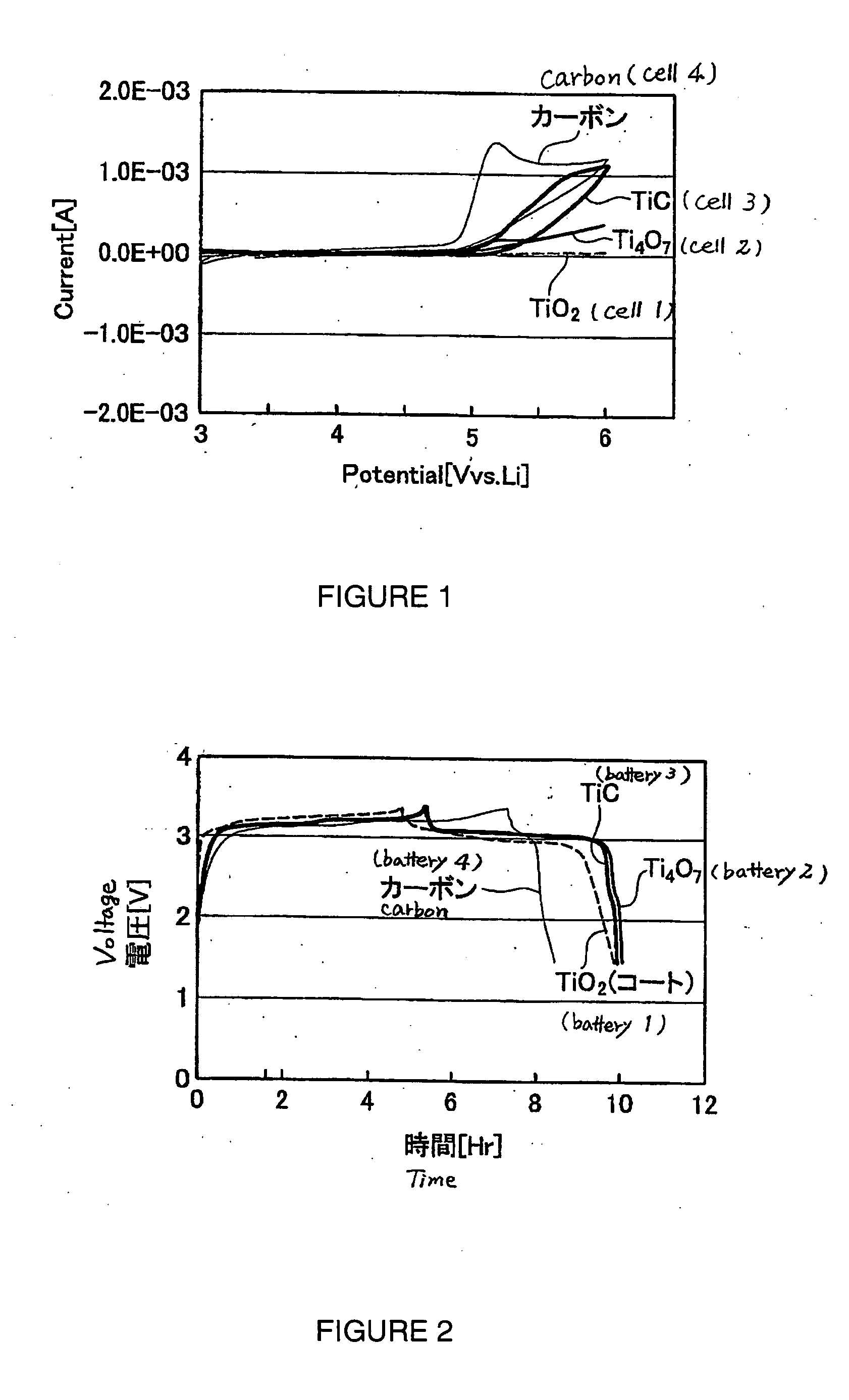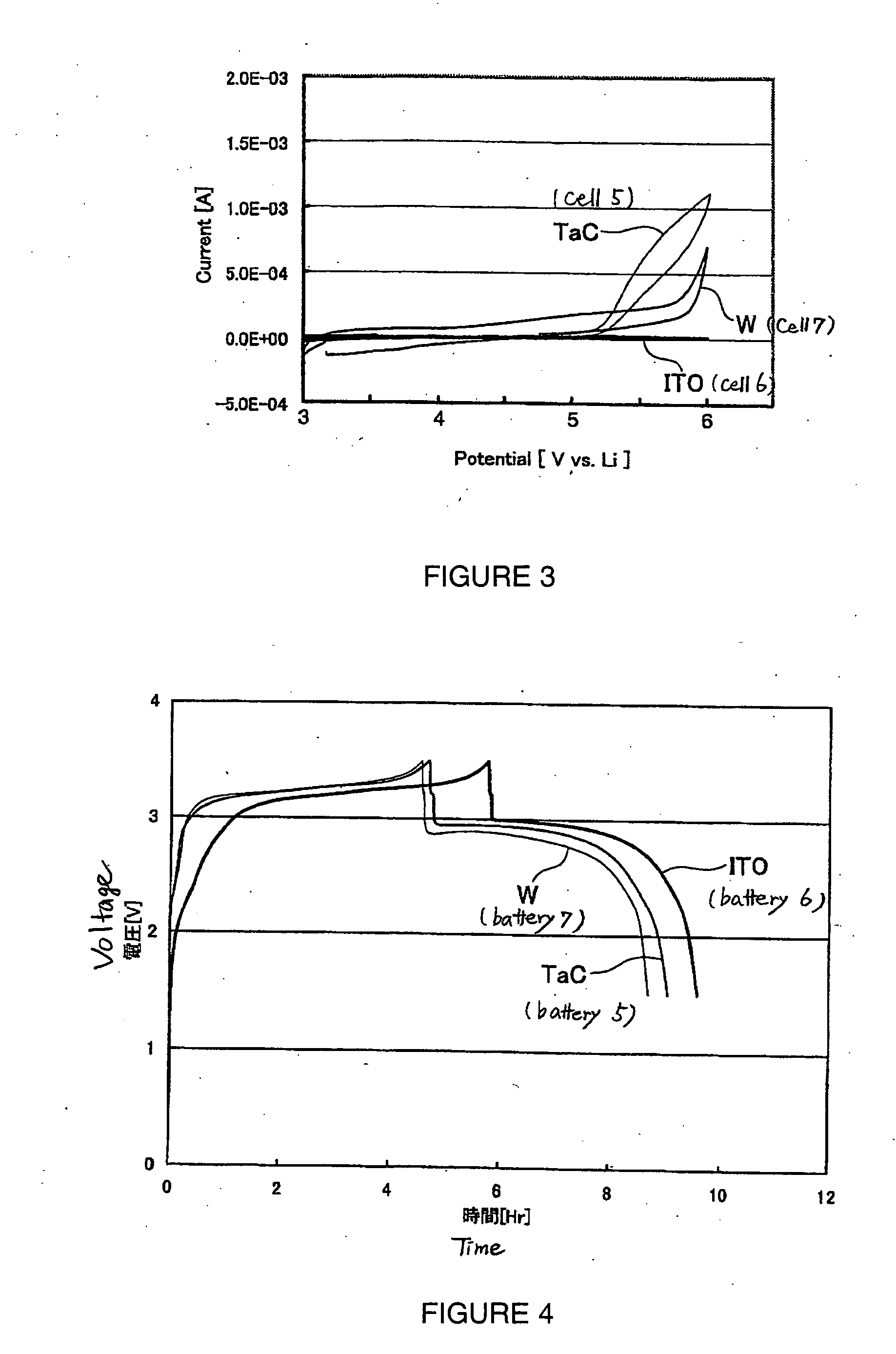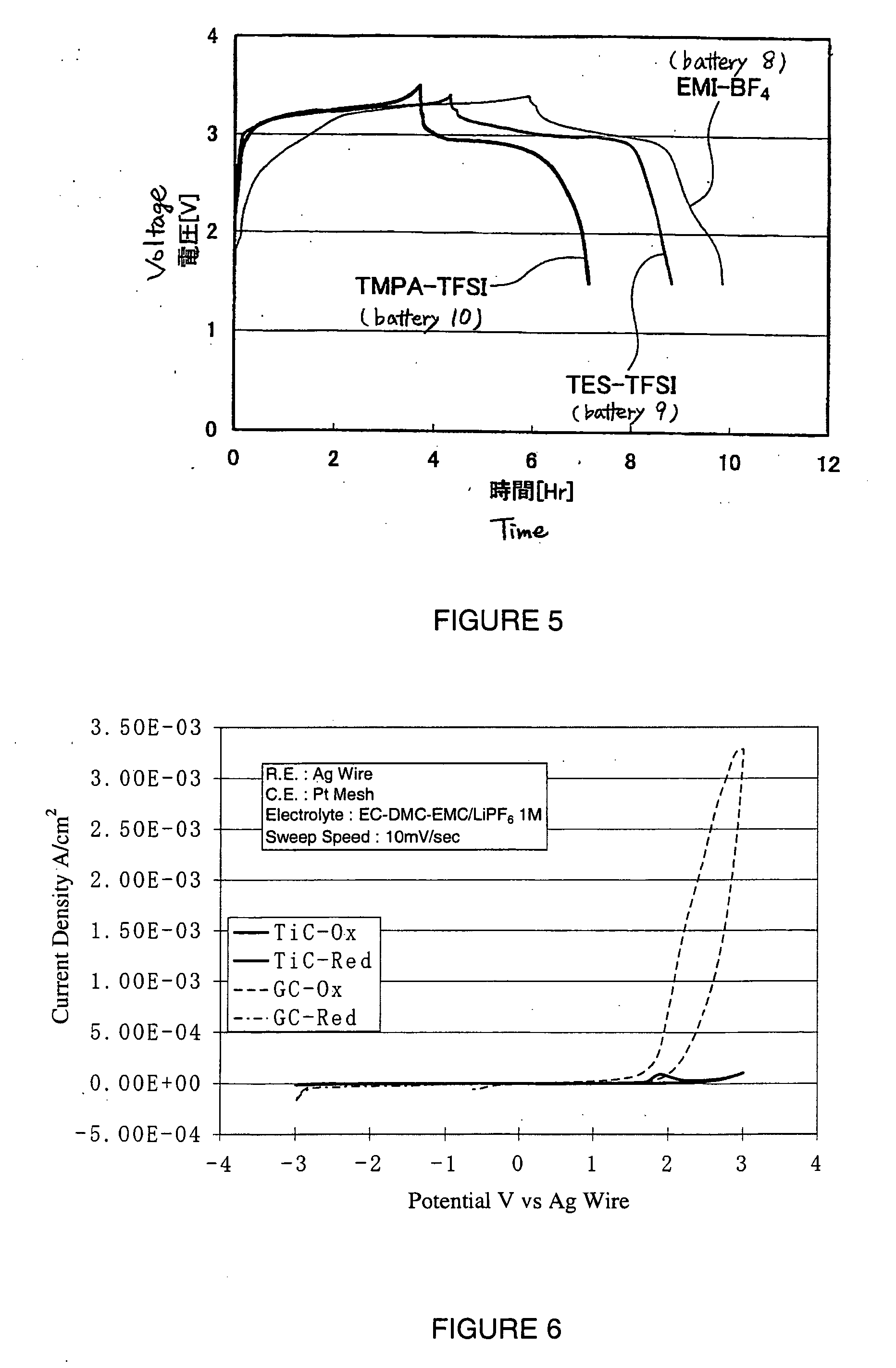Battery and method of manufacturing the same
- Summary
- Abstract
- Description
- Claims
- Application Information
AI Technical Summary
Benefits of technology
Problems solved by technology
Method used
Image
Examples
experimental example 1
Study into Electrode-Constituting Materials
[0081] The present experimental example is an example in which a study was carried out into the effect of the type of the material constituting an electrode on the electrochemical stability of a molten salt.
[0082] (Manufacture of Cell 1)
[0083] TiO2 nanoparticles (average particle diameter: 20 nm) and polyvinylidene fluoride (PVDF) were mixed together in N-methylpyrrolidone (NMP). The TiO2:PVDF mass ratio in the mixture was approximately 7:1. The mixture was applied onto Al foil and then dried. As the PVDF, ‘KF Polymer #1120’ (trademark), a product of Kureha Chemical Industry Co., Ltd. was used.
[0084] Taking the aluminum foil having the TiO2 held on the surface thereof as a working electrode, and taking a solution of 1.25 mol / L of lithium trifluorosulfonylimide (LiTFSI) as a supporting electrolyte in 1-ethyl-3-methylimidazolium trifluorosulfonylimide (EMI-TFSI) as an electrolyte, a 3-electrode electrochemical cell (cell 1) was constructe...
experimental example 2
Manufacture of Batteries
[0094] The present experimental example is an example in which batteries were manufactured using various electron conducting materials.
[0095] (Manufacture of Battery 1)
[0096] A positive electrode was manufactured as follows. That is, the TiO2 nanoparticles used in experimental example 1 and the carbon particles used in experimental example 1 were mixed together in a mass ratio of approximately 1:10, and mechanochemical treatment (1300 rpm, 120 minutes) was carried out in a nitrogen atmosphere. As a result, particles (particles 1) in which TiO2 nanoparticles were held on the surface of carbon particles were obtained.
[0097] LiNiO5Mn1.5O4 as an active material, the particles 1 as an electron conducting material, and PVDF as a binder were mixed together with NMP. The mixture contained the LiNi0.5Mn1.5O4, the particles 1 and the PVDF in a mass ratio of approximately 85:10:5. The mixture was applied onto one surface of Al foil (a positive electrode collector) o...
experimental example 3
Observation of Charge-Discharge Profile
[0107] A charge-discharge test was carried out for each of the batteries manufactured in experimental example 2.
[0108] That is, at room temperature (25° C.), each battery was charged to 3.5 V (versus the negative electrode) using a constant current with a current density of 1 / 5 C, and then after pausing for 5 minutes, was discharged to 1.5 V (versus the negative electrode) using a constant current of 1 / 5 C. The symbol ‘C’ here represents the hour rate of the current. A current density of 1 / 5 C means the current density (ampere; A) at which an amount of electricity corresponding to the battery capacity (ampere hour; Ah) of the battery can be supplied in 5 hours. Here, the current density of 1 / 5 C is approximately 3.2 mA.
[0109] The voltage profiles of the batteries upon carrying out charging and discharging in this way are shown in FIG. 2. Note that the vertical axis in FIG. 2 shows the potential of the positive electrode relative to the negat...
PUM
| Property | Measurement | Unit |
|---|---|---|
| Temperature | aaaaa | aaaaa |
| Temperature | aaaaa | aaaaa |
| Electric potential / voltage | aaaaa | aaaaa |
Abstract
Description
Claims
Application Information
 Login to View More
Login to View More - R&D
- Intellectual Property
- Life Sciences
- Materials
- Tech Scout
- Unparalleled Data Quality
- Higher Quality Content
- 60% Fewer Hallucinations
Browse by: Latest US Patents, China's latest patents, Technical Efficacy Thesaurus, Application Domain, Technology Topic, Popular Technical Reports.
© 2025 PatSnap. All rights reserved.Legal|Privacy policy|Modern Slavery Act Transparency Statement|Sitemap|About US| Contact US: help@patsnap.com



